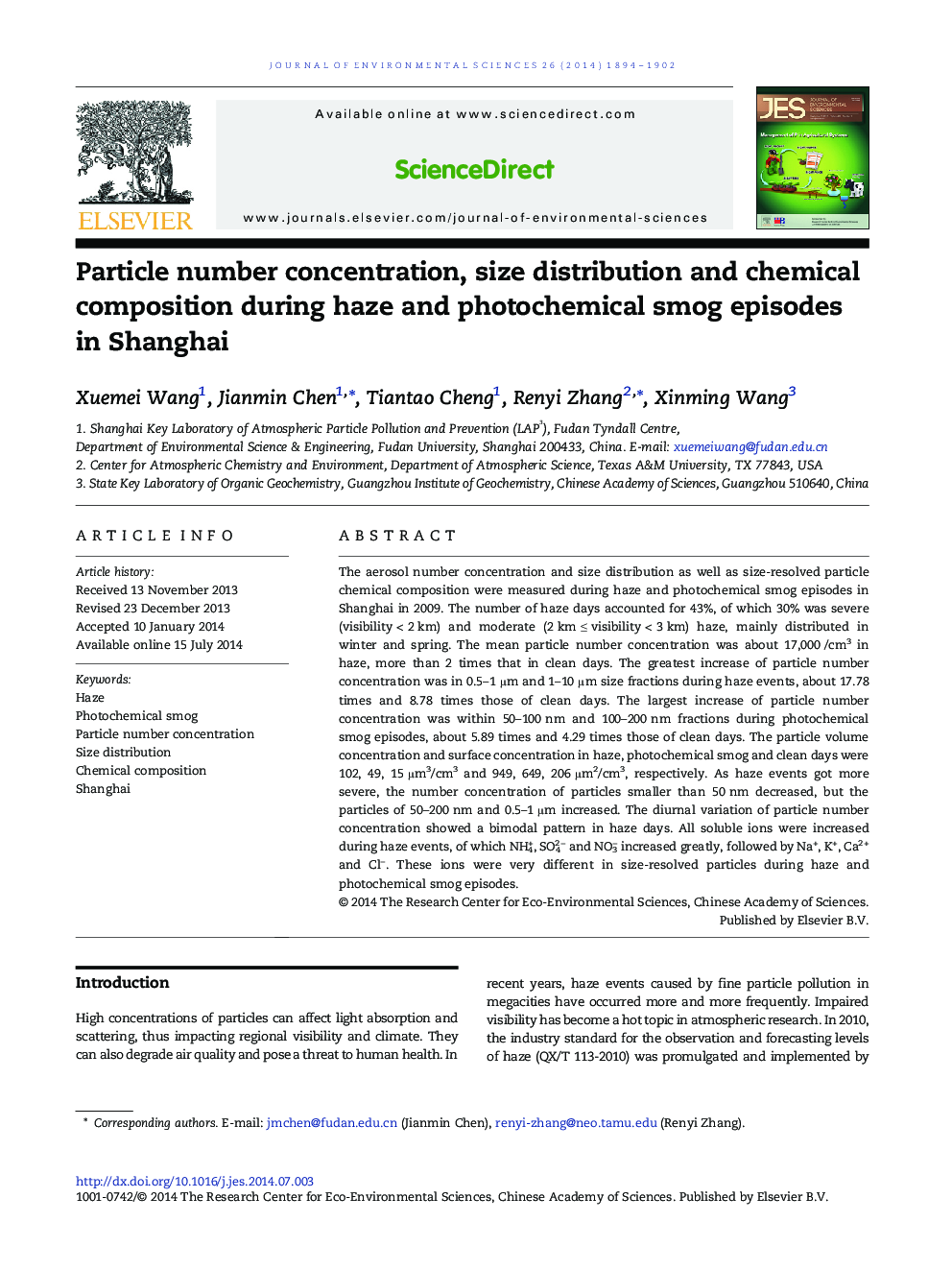| Article ID | Journal | Published Year | Pages | File Type |
|---|---|---|---|---|
| 4454526 | Journal of Environmental Sciences | 2014 | 9 Pages |
The aerosol number concentration and size distribution as well as size-resolved particle chemical composition were measured during haze and photochemical smog episodes in Shanghai in 2009. The number of haze days accounted for 43%, of which 30% was severe (visibility < 2 km) and moderate (2 km ≤ visibility < 3 km) haze, mainly distributed in winter and spring. The mean particle number concentration was about 17,000 /cm3 in haze, more than 2 times that in clean days. The greatest increase of particle number concentration was in 0.5–1 μm and 1–10 μm size fractions during haze events, about 17.78 times and 8.78 times those of clean days. The largest increase of particle number concentration was within 50–100 nm and 100–200 nm fractions during photochemical smog episodes, about 5.89 times and 4.29 times those of clean days. The particle volume concentration and surface concentration in haze, photochemical smog and clean days were 102, 49, 15 μm3/cm3 and 949, 649, 206 μm2/cm3, respectively. As haze events got more severe, the number concentration of particles smaller than 50 nm decreased, but the particles of 50–200 nm and 0.5–1 μm increased. The diurnal variation of particle number concentration showed a bimodal pattern in haze days. All soluble ions were increased during haze events, of which NH4+, SO42 − and NO3− increased greatly, followed by Na+, K+, Ca2 + and Cl−. These ions were very different in size-resolved particles during haze and photochemical smog episodes.
